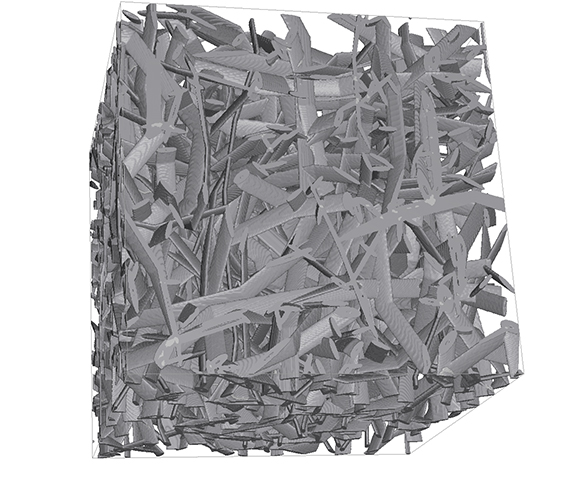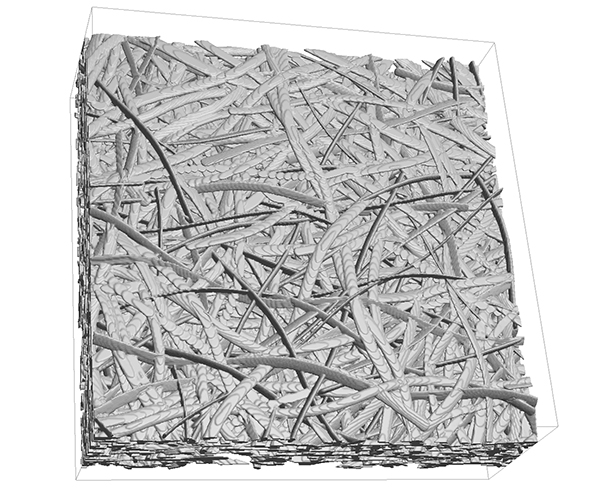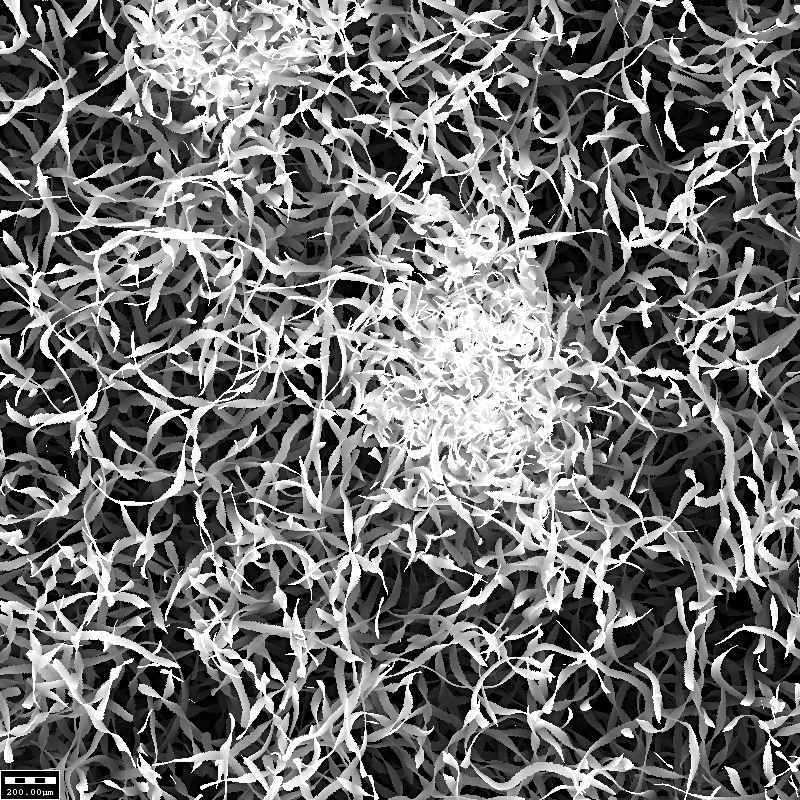Fluid Transport in Hygiene Products
It was the aim of this project to determine numerically the effective transport properties of a cellulosic layer. This fibrous layer is one of many different layers used in modern hygiene products to control and steer the flow of a liquid. To improve the functionality of this product, it is very helpful to know the permeabilities and capillary pressure-saturation curves of all the different materials and layers used. Computer simulations allow to determine these parameters and thus enable to engineer new materials virtually.



